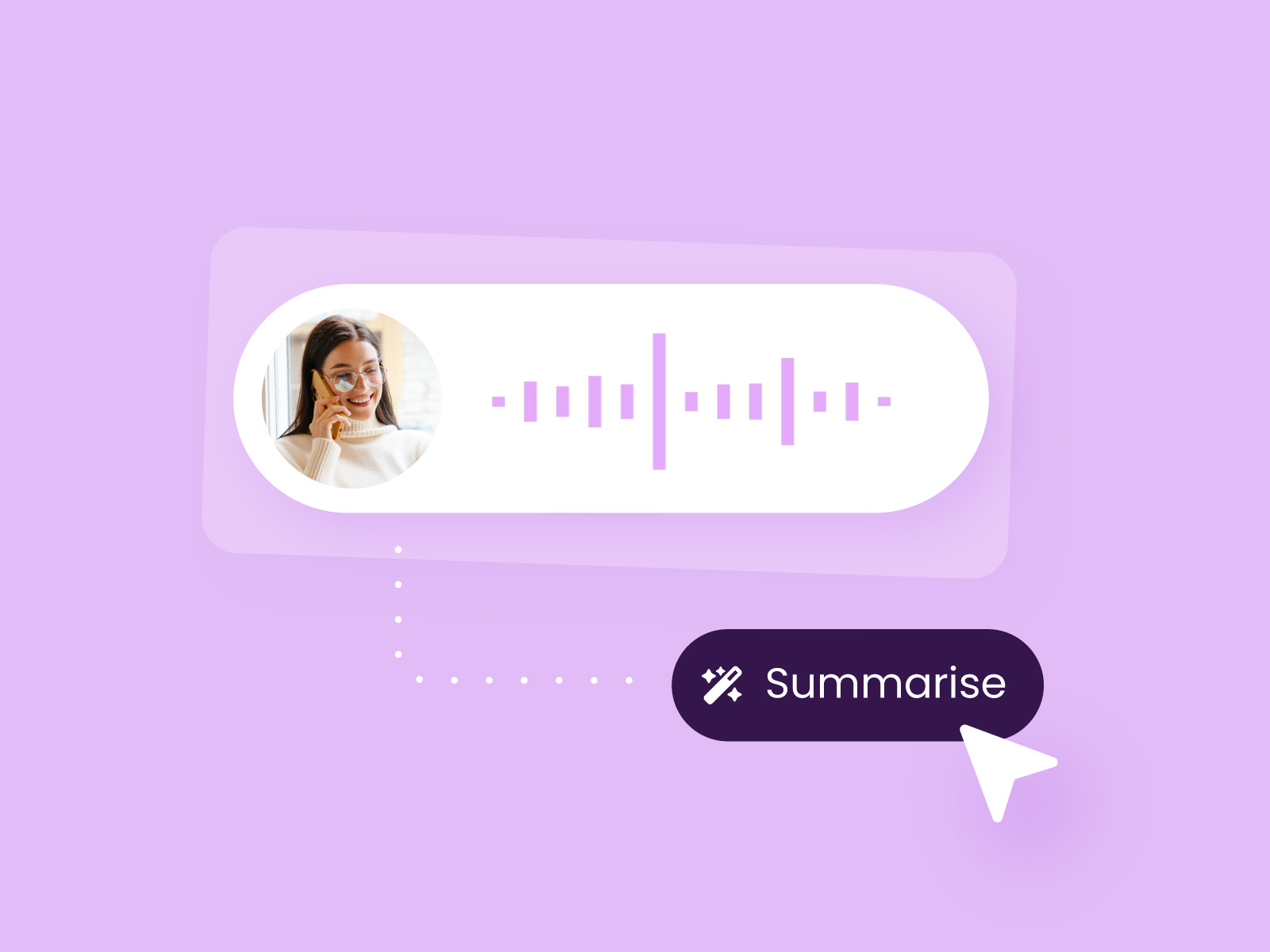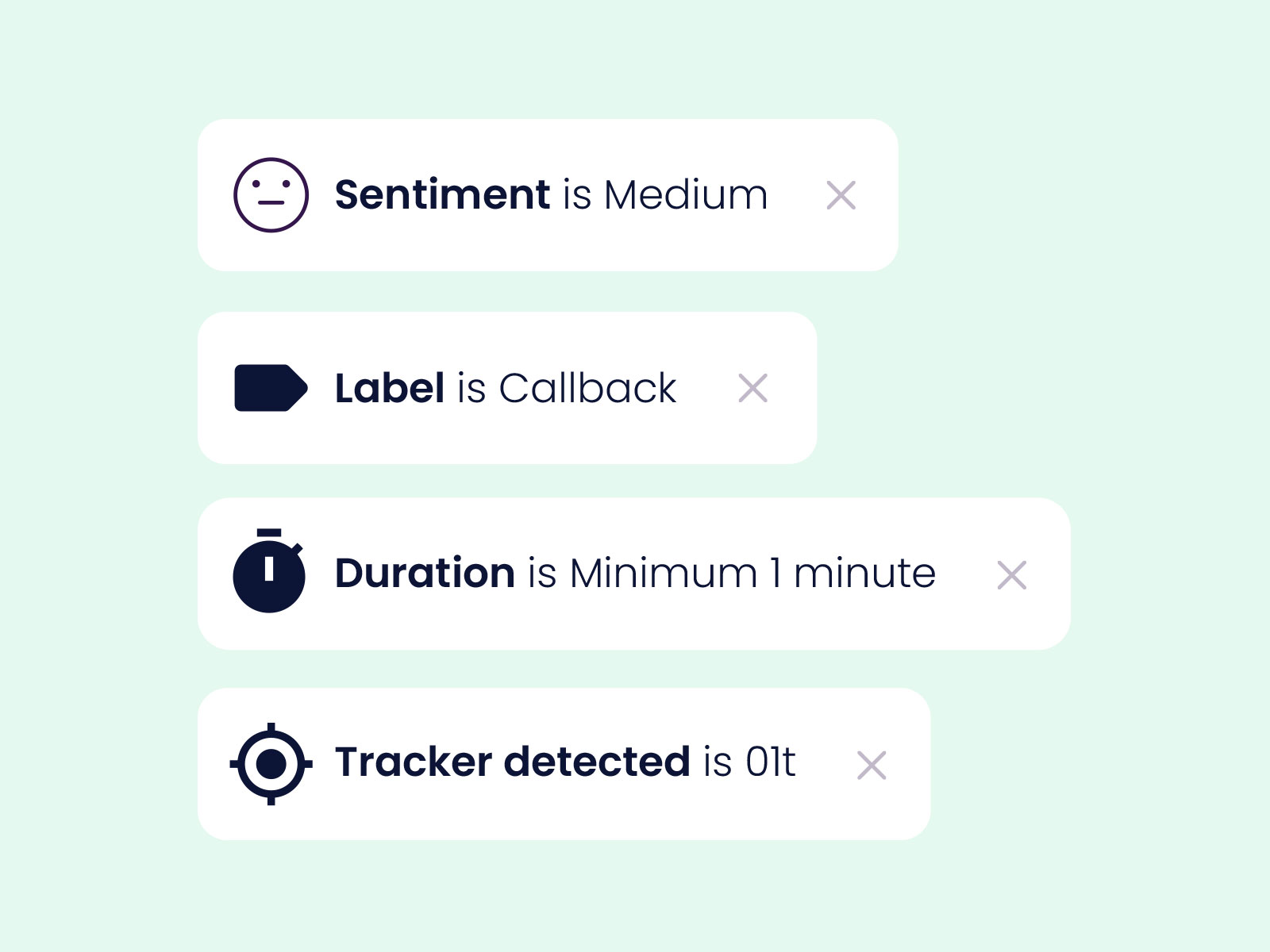Last updated: December 2024
Learn what chatbots are, the difference between traditional vs. AI chatbots, their use cases in customer service, and the benefits for contact centres and customer support teams.
Chatbots have become a hot topic in recent years. While they've been around for decades, their adoption surged in 2022 with the release of OpenAI's generative AI chatbot, ChatGPT. Since then, chatbots have been used worldwide for a range of purposes, particularly in customer support. In fact, Gartner predicts that by 2027, chatbots will be the primary customer service channel for about a quarter of organisations.
But what exactly is a chatbot and why have they become so vital in customer service? What sets traditional chatbots apart from AI chatbots?
Let’s dive in to explore how chatbots work, what an AI chatbot is, and how customer service teams can leverage these tools to improve customer experience.
What is a chatbot?
Chatbots are software applications designed to simulate human-like conversations with users through text or voice interactions. It's most common to see them appearing as chat windows on websites, allowing customers to engage directly with businesses.
Since the creation of the first chatbot, ELIZA, in 1966, today’s chatbots have evolved significantly. Modern chatbots typically use advanced technologies like artificial intelligence (AI), natural language understanding (NLU), natural language processing (NLP), and machine learning (ML) to stimulate human-like conversations.
These digital assistants are becoming increasingly popular in modern customer service strategies, offering businesses a way to engage with customers more efficiently while boosting customer satisfaction. In fact, about 60% of business owners believe that AI chatbots can help to improve their customers’ experience, according to Tidio.
Different types of chatbots
Typically, chatbots are categorised into rule-based chatbots and AI chatbots.
_Are%20customer%20service%20and%20customer%20experience%20the%20same-.png?width=3115&height=2121&name=SEO%20images(chapter%207)_Are%20customer%20service%20and%20customer%20experience%20the%20same-.png)
What are rule-based chatbots?
Rule-based chatbots use predefined scripts and answers. They follow a set of rules and provide specific responses based on the user’s input. These chatbots are excellent for handling structured queries and tasks, such as answering frequently asked questions (FAQs) or guiding users through simple processes like booking appointments. It’s worth noting that these chatbots don’t usually understand the context of a conversation.
The advantages of these types of chatbots are that businesses have full control over the chatbot's responses, and they are often easier to design and implement. On the contrary, they don’t learn from interactions, limiting their ability to improve over time.
What is an AI chatbot?
AI chatbots leverage artificial intelligence, machine learning, and natural language processing (NLP) to understand and respond to questions in a more dynamic and human-like manner.
Unlike traditional rule-based chatbots, AI chatbots can understand natural language, learn from interactions, and continuously improve their responses over time. These chatbots are designed to provide intelligent and engaging interactions, making them a powerful tool for enhancing customer service experiences. Some examples of popular AI-powered chatbots are ChatGPT and Gemini.
The technology behind AI chatbots include:
- Artificial Intelligence (AI): At the core of sophisticated chatbots is AI, which enables them to learn from interactions, adapt to new inputs, and improve over time. AI allows chatbots to go beyond simple scripted responses and handle more complex conversations by recognising patterns and drawing insights from previous interactions.
- Natural Language Processing (NLP): NLP is a core component of AI chatbots that allows them to understand and interpret human language. It breaks down and analyses text or speech, allowing the chatbot to comprehend not just the words but the context and sentiment behind them. This means AI chatbots can handle more complex queries, detect emotions, and even resolve ambiguities in customer requests. NLP helps ensure conversations with AI chatbots feel more natural and engaging, improving the overall customer experience.
- Machine Learning (ML): Machine Learning is another crucial element that sets AI chatbots apart. Through ML, these chatbots can continually improve their interactions by learning from past conversations. As they process more data, they become smarter, refining their responses based on previous customer interactions and feedback. This ability to learn and evolve ensures that AI chatbots can handle a growing variety of queries, providing faster and more accurate responses over time.
How chatbots work
Chatbots have become an essential tool in customer service, transforming the way businesses interact with customers. But how exactly do chatbots work? Understanding the mechanisms behind these AI-powered assistants can help you see how they deliver efficient, responsive support while also improving customer experiences. Let’s break down the key elements that make chatbots work.
1. Natural Language Processing (NLP)
NLP is the technology that allows chatbots to understand and interpret human language. By analysing the structure of sentences, grammar, and context, NLP enables chatbots to process a user’s input in real time and provide a relevant response.
How it works: When a customer types a message, NLP breaks it down into manageable parts. It recognises keywords, intent, and even emotions to respond accurately. NLP helps chatbots understand not just what customers say but what they mean, allowing them to respond more naturally and effectively.
Example: When a customer asks, "What’s the status of my order?" the chatbot recognises "status" and "order" as key terms and looks up the relevant information.
2. Pre-programmed responses vs. Machine Learning
Some chatbots operate using pre-programmed responses, which are essentially a set of scripted replies designed to answer specific queries. These are useful for simple FAQs and routine tasks, like resetting passwords or checking delivery statuses. However, more advanced chatbots rely on machine learning (ML), a subset of AI, to learn from past interactions and improve their responses over time.
Example: An ML-powered chatbot might initially respond to a customer query with a basic answer, but over time, it will learn to provide more accurate, tailored responses based on previous conversations.
3. Intent recognition
At the heart of chatbot functionality is intent recognition—the ability to understand what the customer is trying to achieve. Whether it's answering a question, making a booking, or resolving a complaint, chatbots are trained to identify the intent behind each customer query.
How it works: When a user submits a question, the chatbot analyses the text to determine the user’s intent. For example, if a customer types “I want to change my address,” the chatbot identifies that the intent is to update account information and offers the appropriate steps to do so.
Example: If a customer asks, "Can I get help with my billing?" the chatbot will identify the intent as a billing inquiry and respond with relevant information or pass the query to a human agent for more complex issues.
4. Context awareness
The best chatbots are context-aware, meaning they can maintain the flow of a conversation and remember important details shared earlier in the interaction. This allows them to provide a seamless and natural user experience, even across multiple queries.
How it works: Chatbots use context awareness to keep track of ongoing conversations, personal preferences, and past interactions. For example, if a customer has already provided their order number in a previous message, the chatbot will remember this information and avoid asking for it again.
Example: If a customer says, “I want to check my order,” and later asks, “Can I also change the delivery date?” the chatbot can link the two requests and optimise the process.
5. Integration with contact centre solutions
To be truly effective, chatbots need to be integrated with your company’s CX systems like CRM software, inventory databases, and customer service platforms. This integration allows chatbots to access real-time information and perform tasks that go beyond simple question-answering.
How it works: When a customer requests to check the status of their order, the chatbot connects with the company’s order management system to retrieve up-to-date tracking information and deliver it directly to the customer. Similarly, if a customer needs to update their account details, the chatbot can interact with CRM software to make the necessary changes.
6. Continuous learning and improvement
Advanced chatbots use machine learning algorithms to continually improve their performance. Over time, they learn from previous interactions, adjusting their responses and making them more accurate with each conversation.
How it works: Chatbots track conversation patterns, gather feedback, and learn from mistakes. Through machine learning, they can refine their ability to understand user intent, improve context awareness, and even predict the best possible responses in future interactions.
Example: If a chatbot frequently misunderstands a particular type of customer query, machine learning helps it identify the issue and improve its response accuracy over time.
"About 60% of business owners believe AI chatbots can help to improve their customers’ experience" - Tidio.
Chatbot use cases in customer service
Let’s look at some specific examples of how businesses in different sectors are leveraging chatbots to improve their customer service.
_How%20CCaaS%20enhances%20customer%20experience%20(CX).png?width=3115&height=1379&name=SEO%20images(chapter%207)_How%20CCaaS%20enhances%20customer%20experience%20(CX).png)
- Order tracking: Many retail brands use chatbots to provide real-time updates on order status. Customers can inquire about their order progress without waiting for an email or a phone call, resulting in quicker responses and higher satisfaction.
- Returns and exchanges: Chatbots can guide customers through the return process, answering common questions and providing step-by-step instructions. This not only simplifies the process for customers but also reduces the burden on customer service agents.
- Appointment scheduling: AI chatbots simplify the appointment booking process by allowing customer and patients to schedule, reschedule, or cancel appointments through a chat interface. This reduces administrative burdens and improves patient satisfaction.
- Billing queries: Customers can use chatbots to check their billing information, pay bills, and understand charges on their statements. This immediate access to information reduces call centre traffic and improves customer satisfaction.
These are just some examples of how modern AI chatbots can be used for different industries and use cases, speeding up resolution times and enhancing self-service offerings.
Key benefits of implementing AI chatbots in customer service
The implementation of AI chatbots in customer service strategies brings forth a multitude of benefits that significantly improve operations and customer interactions. From boosting efficiency to ensuring consistent support, these intelligent systems are transforming how businesses engage with their customers. Here are some of the key advantages of integrating AI chatbots into customer service.
_Key%20benefits%20of%20using%20AI%20chatbots%20in%20customer%20service.png?width=3115&height=1584&name=SEO%20images(chapter%207)_Key%20benefits%20of%20using%20AI%20chatbots%20in%20customer%20service.png)
Increased efficiency and reduced operational costs
One of the most notable benefits of AI chatbots is their ability to increase efficiency within customer service operations. By automating routine queries and tasks, chatbots free up human agents to focus on more complex and nuanced customer interactions. This automation reduces the time agents spend on repetitive tasks, allowing them to provide more thoughtful and personalised support where it's needed most.
Additionally, AI chatbots can handle a high volume of queries simultaneously, which leads to reduced operational costs. Businesses can minimise staffing requirements during peak hours while still maintaining a high level of service. This not only lowers costs but also optimises resource allocation, leading to more efficient overall operations.
Improved scalability for customer support teams
As businesses grow, their customer support needs often expand. AI chatbots provide a scalable solution that can easily accommodate increasing volumes of customer queries without the need for proportional increases in staff. Whether a business experiences seasonal spikes or rapid growth, chatbots can seamlessly manage larger numbers of interactions.
This scalability ensures that customer service teams can maintain quality support during busy periods without overwhelming their staff. AI chatbots can quickly adapt to changing demands, allowing businesses to remain responsive and customer-centric.
24/7 availability and instant response times
AI chatbots offer 24/7 availability, ensuring that customers can receive assistance whenever they need it. This constant accessibility eliminates the limitations of traditional business hours, allowing customers from different time zones to engage with the brand at their convenience. In a report by Intercom, 50% of executives name AI’s ability to provide support 24/7 as a top benefit for using AI chatbots.
Moreover, the instant response times provided by AI chatbots significantly improve the customer experience. Customers no longer have to wait for email responses or navigate through complex phone menus; they can access support and receive answers to their queries immediately. This rapid response capability boosts customer satisfaction and creates a positive impression of the brand. And it matters, as 53% of customers feel that waiting too long for a reply is the most frustrating part of interacting with a business, according to Tidio.
Consistent and accurate responses, enhancing trust in customer service
Another vital benefit of AI chatbots is their ability to deliver consistent and accurate responses. Unlike human agents who may vary in their knowledge or interpretation of a query, AI chatbots provide standardised answers based on their training data. This consistency helps to ensure that customers receive reliable information every time they interact with the chatbot.
This reliability fosters trust in the customer service experience. When customers know they can expect accurate and consistent responses, they are more likely to engage with the brand and seek assistance through the chatbot. Over time, this trust translates into higher customer loyalty and retention.
Related content: How AI chatbots reduce resolution times and improve CX in customer support
Best practices and tips for implementing chatbots
Implementing chatbots in your customer service strategy can significantly improve user experience and operational efficiency. However, the success of your chatbot hinges on effective implementation. Here, we’ll outline the best practices and tips to ensure your chatbot delivers optimal results.
- Define clear objectives
Before deploying a chatbot, it’s crucial to establish clear objectives for its use. Consider what specific problems you want the chatbot to solve and the goals you aim to achieve. This could include improving response times, handling routine inquiries, or providing 24/7 support.
Tip: Set measurable goals, such as reducing average handling time or increasing customer satisfaction scores, to assess the chatbot's performance over time. - Understand your audience
To create an effective chatbot, you need to understand your audience’s needs, preferences, and pain points. Conduct research to gather insights about your customers’ typical inquiries, preferred communication channels, and language usage. - Select the best technology partner
Choosing the right technology for your chatbot is essential for achieving seamless integration and optimal performance. Start by evaluating how well the platform integrates with your existing systems, such as your customer relationship management (CRM) software and contact centre operations. A solution like Puzzel’s chatbot is designed for smooth integration, enhancing the overall customer experience. Look for platforms that leverage advanced AI capabilities, including natural language processing (NLP) and machine learning, to deliver accurate, human-like interactions. Customisation options are also crucial, allowing you to tailor responses and functionalities to fit your brand voice. - Train your chatbot continuously
The effectiveness of a chatbot relies on its ability to learn and adapt. Regularly train the chatbot with new data, including common queries and emerging trends, to improve its understanding and accuracy over time.
Tip: Implement a feedback loop where users can rate their interactions, allowing you to identify areas for improvement and improve the chatbot’s responses. - Seamless escalation to human agents
While chatbots can handle many queries, there will be instances when human intervention is necessary. Design your chatbot with clear escalation protocols to ensure smooth transitions to live agents when needed. - Prioritise privacy and security
Given the sensitive nature of customer data, it’s essential to prioritise user privacy and security when implementing chatbots. Ensure that your chatbot provider complies with regulations such as GDPR and implements robust security measures to protect user information. - Monitor performance and iterate
Once your chatbot is live, continuous monitoring is crucial to ensure its effectiveness. Track key performance indicators (KPIs) such as response times, resolution rates, and customer satisfaction scores.
Tip: Use analytics tools to gather insights on user interactions, allowing you to identify patterns and areas for improvement. Regularly update and iterate on your chatbot based on this data to improve its performance. - Test before launch
Before fully launching your chatbot, conduct thorough testing to identify any bugs, usability issues, or gaps in the conversation flow. Involve real users in testing to gather feedback and make necessary adjustments.
Tip: Consider running a soft launch to a select audience, allowing you to gather insights and make improvements before a full rollout. - Provide ongoing support and maintenance
Implementing a chatbot is not a one-time effort; it requires ongoing support and maintenance to remain effective. Regularly review its performance, update its knowledge base, and refine its conversation flows as needed.
Implementing a chatbot can revolutionise your customer service strategy, but its success depends on thoughtful planning and execution. By following these best practices and tips, you can ensure your chatbot improves user experience, drives engagement, and ultimately contributes to your business's success.
The role of generative AI in modern chatbots
Generative AI is an advanced subset of artificial intelligence that enables systems, including AI chatbots, to generate new, human-like content based on the data they've been trained on. Unlike traditional chatbots, which rely on predefined scripts and responses, generative AI chatbots can create unique responses during interactions, leading to more fluid and natural conversations. This technology is reshaping the way businesses engage with customers, enhancing both the efficiency of customer support and the overall customer experience.
How generative AI enables human-like responses
At its core, generative AI creates human-like responses through a combination of advanced machine learning techniques. It starts with training on large datasets, which include a wide range of text from books, articles, and websites. This extensive training helps these chatbots learn the subtleties of human language, including grammar, context, and cultural nuances. When users interact with the chatbot, it analyses the input to understand the intent and appropriate tone, using context to generate relevant and coherent responses.
Generative AI enables chatbots to go beyond basic, transactional interactions, creating conversations that mimic natural human dialogue. This results in smoother, more intuitive experiences for customers, as the chatbot can handle open-ended questions and adapt to a wider variety of conversational flows.
Personalising customer interactions with Generative AI
One of the most significant impacts of generative AI is its ability to personalise customer interactions. By understanding the customer’s intent, tone, and history, AI chatbots can deliver highly customised responses. This personalisation goes beyond addressing the customer by name; the chatbot can recall previous conversations, offer recommendations based on past interactions, and adapt its responses to suit the customer’s mood or preferences.
For example, if a customer frequently asks about a specific product or service, the AI chatbot can proactively offer updates or related suggestions. This not only improves the customer experience but also builds a sense of familiarity and trust, as the chatbot becomes more in tune with individual customer needs.
"64% of customer service agents who use AI chatbots can spend most of their time solving complex cases." - Salesforce
The future of AI chatbots in customer service.
AI chatbots have undoubtedly transformed the landscape of customer service, offering businesses a powerful tool to improve customer engagement, streamline operations, and reduce costs. As customer expectations continue to evolve, chatbots provide the scalability and efficiency required to meet growing demand, all while delivering consistent and personalised experiences.
From handling repetitive tasks to offering 24/7 support, chatbots help businesses operate more smoothly, improving both the customer experience and internal productivity. With advancements in generative AI and machine learning, the capabilities of these digital assistants will only continue to expand, enabling even more natural, human-like interactions.
However, like any technology, the successful implementation of chatbots depends on striking the right balance between automation and the human touch. By integrating chatbots thoughtfully into customer service strategies, businesses can ensure that they complement rather than replace human agents, offering seamless and intelligent support across all touchpoints.
As AI technology continues to evolve, chatbots will become an essential part of customer service teams, driving the future of customer experience. Forward-thinking businesses that invest in chatbot technology today will be well-positioned to deliver the efficient, personalised service that tomorrow’s customers expect.






